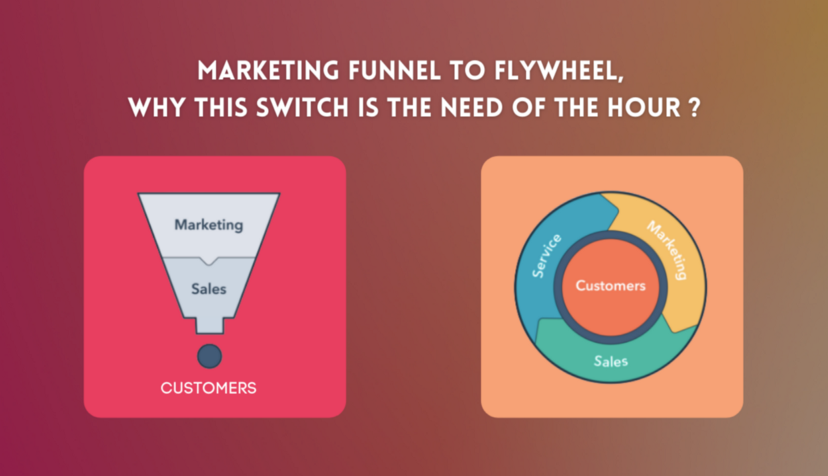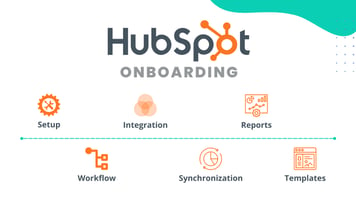HubSpot is the most powerful marketing automation platform and Top CRM platform that helps brands...
Marketing is ever-evolving; every aspect of marketing tends to evolve, including the medium we use, the way we communicate, & most marketers will agree that the customers have grown. Customers have become so savvy & skeptical that the moment they smell any trace of advertisement, they lose interest in it.
We are at a point now, “Marketing means Education”. The marketing funnel template is out of the league, or we can say it has evolved into a much better, refined version — The Flywheel.
Companies now have a better way to grow. Brands align themselves in the customers’ shoes, celebrate success together, not just scale but provide delight, make them loyal & vocal for their brand. When businesses improve, they can fulfill even the most ardent consumer expectations, resulting in a better business, connections, and a better road to success.
To improve, your company must provide an exceptional client experience — here is where the flywheel comes into play.
Things you will know on further reading
- The existing problem with the funnel
- How the flywheel attempts to solve those
- How to elevate your existing funnel in line with the wheel
The existing problem with the funnel
The flywheel concept is relatively new, introduced by HubSpot, but it has disrupted the marketing industry and is accepted by all marketers as a modern way to grow. But earlier, HubSpot used the funnel to grow into the giant it is today, so why the sudden change?
The funnel model is so familiar I take the liberty of skipping the explanation part. However, since all these funnel stages are linear, it doesn’t account for the customer’s learning about the brand in the contemporary era we live in.
Now, customers can enter the funnel at various stages of the sales cycle. Many skip the awareness stage entirely & walk themselves through a buying process without even speaking with the salesperson. Thanks to the internet, social media & modern tech have allowed buyers to research independently.
Another con of the linear funnel is that it is designed in a way to treat customers as an afterthought or a salesperson to move them. After months of nurturing customers to the point where the decision is made, they drop out of the funnel; they are gone from the funnel. The marketer starts again from point-blank to nurture a new prospect.
How the flywheel attempts to solve those
Well, take a good look at HubSpot’s Flywheel. The first thing you will note is that the customer is at the center of the flywheel. (i.e.) The flywheel ultimately relies on your leads, prospects & clients to power the flywheel. The salesperson’s job is to remove any friction that could get in the way.
Understand the modern consumer, they are likely to learn & make their purchase decision on their own. The idea here is that when a customer completes one cycle, he is expected to promote the brand to potential customers, as he decided with the knowledge gained, thus fueling the flywheel to spin faster.
Marketers can also increase the speed by applying forces to certain areas of more significant impact. The forces I mean were campaigns & strategies such as Inbound techniques, a freemium, one flow selling setup, referral bonus, digital promotions & investing in the customer care team.
The take here is to focus on making your customers happy; they’re more likely to pass on their success to potential customers.
How to elevate your existing funnel in line with the wheel
We have been trained with funnels for multiple decades & shifting your entire team’s sales methodology over a short time can be a nightmare & chances are there to have a negative impact.
Start with a foundational understanding that customers here will be at the center & they will be there forever, no way out. Then, the marketing team can simply continue nurturing until they seem fit before transferring to the sales team.
Another understanding we need to note in the flywheel is that customers here are the inputs or energies of the flywheel for the spin. When a customer makes a sale, he will still be inside the flywheel, whereas the funnel fundamentally pushes them out. On the contrary, Flywheel retains its energy as it becomes a part of your product or services.
Over time, you may train your sales staff to see and work with prospects in a more flywheel-oriented manner. Please don’t hesitate to contact us if you’re having problems explaining the benefits of the sales flywheel to your team. We’ve worked with various teams to deliver HubSpot services that improve their sales process, resulting in a shorter sales cycle and higher returns. My team & I would be delighted to assist you as well.
-1.png?width=134&height=66&name=amwhiz-logo%20(1)-1.png)



